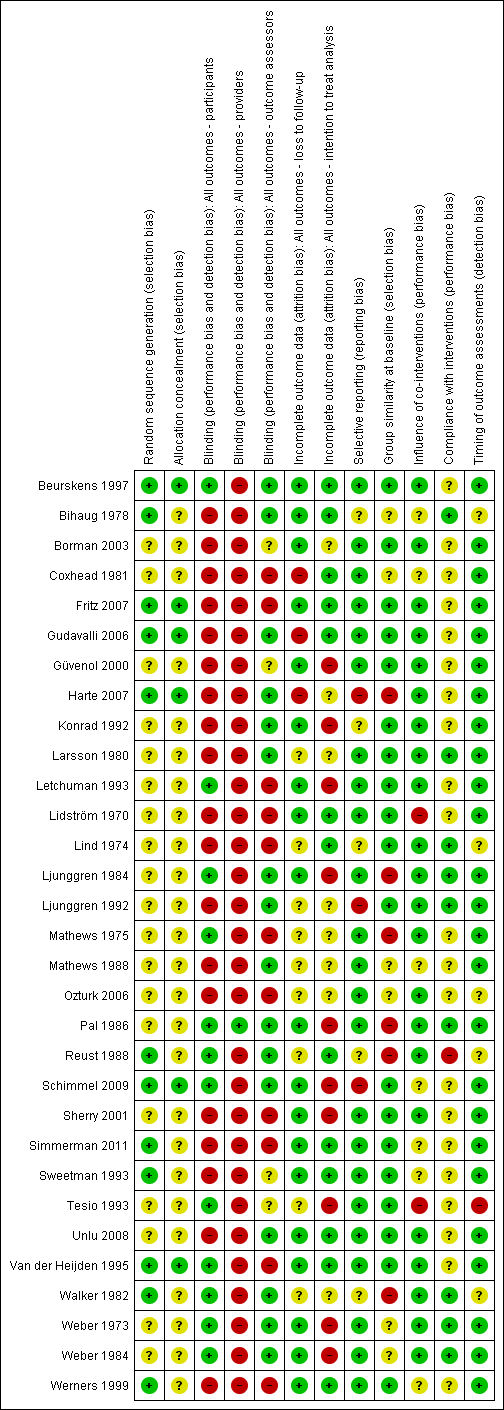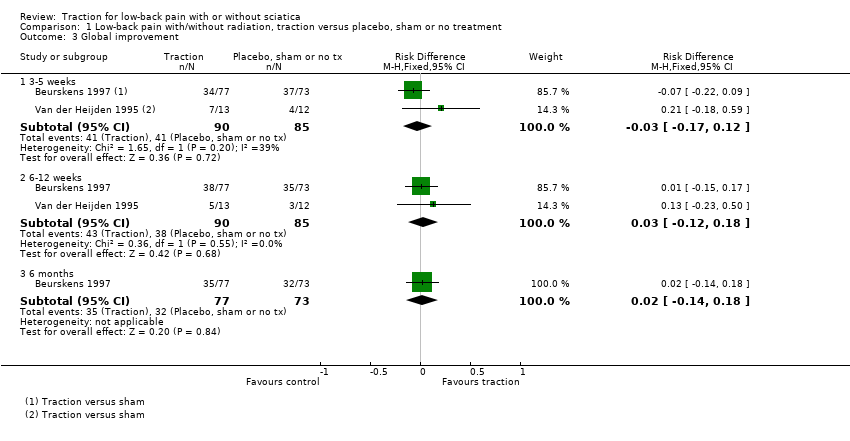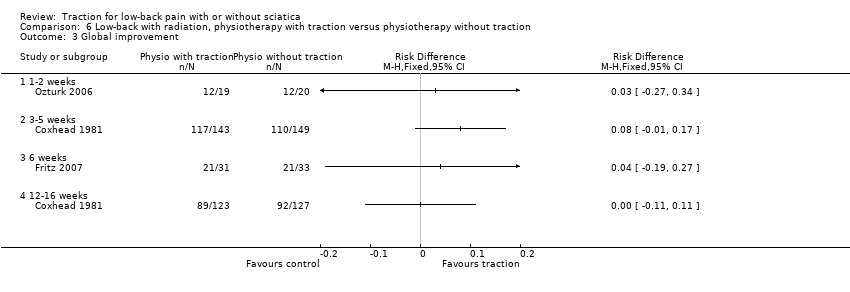Contenido relacionado
Revisiones y protocolos relacionados
Kåre Birger Hagen, Gunvor Hilde, Gro Jamtvedt, Michael Winnem | 16 junio 2010
Zeeshan Waseem, Chris Boulias, Allan Gordon, Farooq Ismail, Geoffrey Sheean, Andrea D Furlan | 19 enero 2011
Luis Enrique Chaparro, Andrea D Furlan, Amol Deshpande, Angela Mailis‐Gagnon, Steven Atlas, Dennis C Turk | 27 agosto 2013
Simon Dagenais, Michael J Yelland, Chris Del Mar, Mark L Schoene | 18 abril 2007
Andrea D Furlan, Mario Giraldo, Amanda Baskwill, Emma Irvin, Marta Imamura | 1 septiembre 2015
Kristin Thuve Dahm, Kjetil G Brurberg, Gro Jamtvedt, Kåre Birger Hagen | 16 junio 2010
Gunvor Hilde, Kåre Birger Hagen, Gro Jamtvedt, Michael Winnem | 19 abril 2006
Bruno T Saragiotto, Christopher G Maher, Tiê P Yamato, Leonardo OP Costa, Luciola C Menezes Costa, Raymond WJG Ostelo, Luciana G Macedo | 8 enero 2016
Safoora Ebadi, Nicholas Henschke, Bijan Forogh, Noureddin Nakhostin Ansari, Maurits W van Tulder, Arash Babaei-Ghazani, Ehsan Fallah | 5 julio 2020
Wendelien H van der Gaag, Pepijn DDM Roelofs, Wendy TM Enthoven, Maurits W van Tulder, Bart W Koes | 16 abril 2020


























